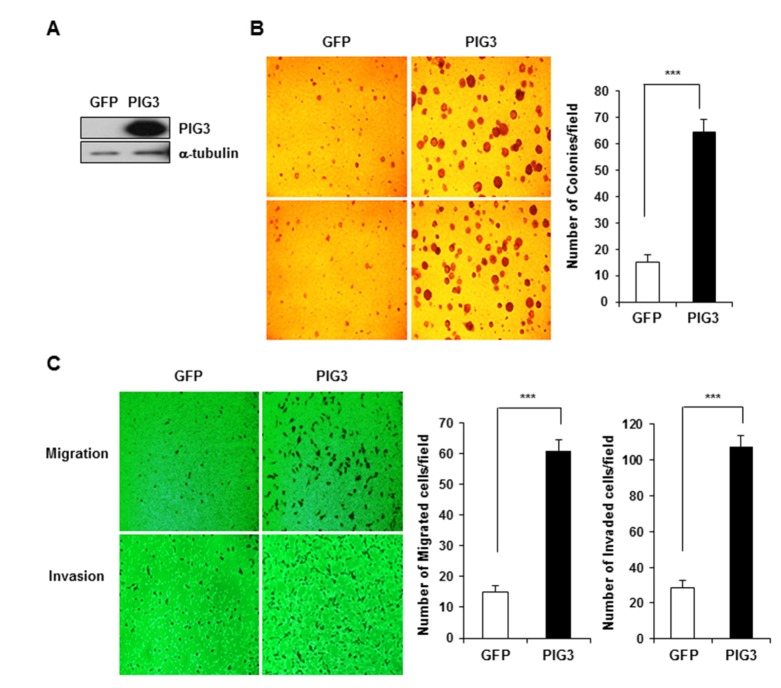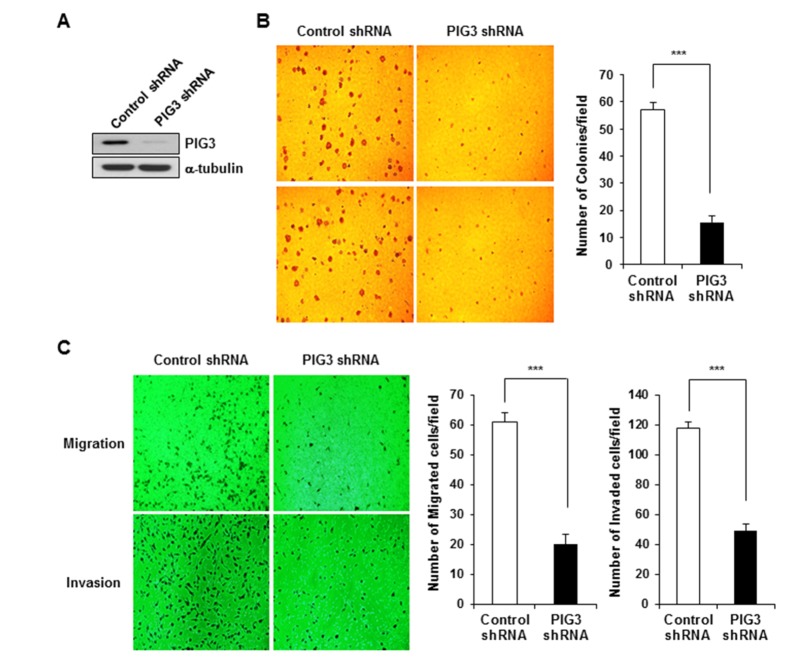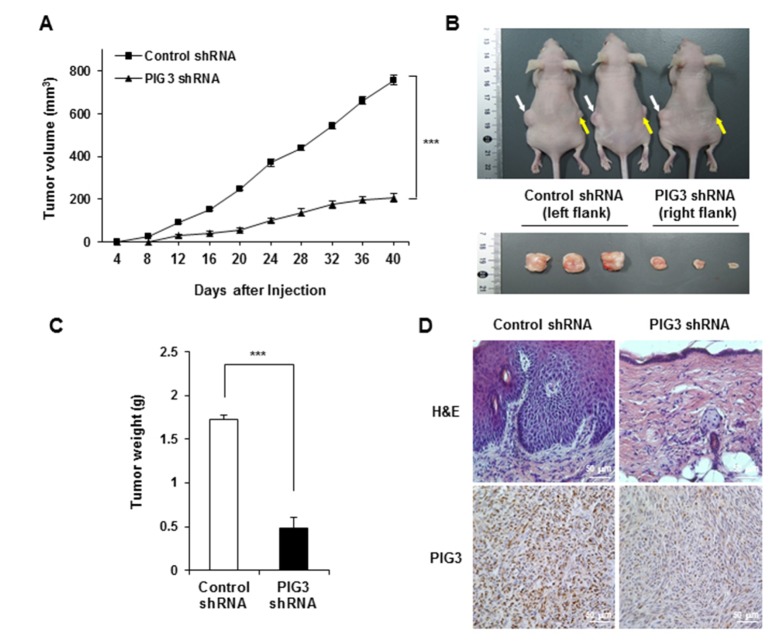INTRODUCTION
Methods
Cell cultures
Plasmid constructs and transfection
Establishment of PIG3 shRNA-expressing HCT116 cells
Western blot analysis
Soft agar colony formation assay
Cell migration and invasion assays
Tumor formation in nude mice
Ethics statement
Immunohistochemistry
Data analysis
Results
Expression of PIG3 in human colon cancer cell lines
Overexpression of PIG3 enhances tumorigenicity in colon cancer cells
 | Fig. 2PIG3 overexpression enhances the tumorigenicity of HCT116 cells in vitro.(A) Western blot analysis showed the increase of PIG3 expression in PIG3 overexpressing HCT 116 cells, compared to control vector expressing cells. a-tubulin was used as a loading control. (B) Control vector and PIG3 overexpressing cells were assessed for colony formation in soft agar for 14 days. (C) Cell migration and invasion assays were performed using the Transwell system. Data represent the mean cell numbers from 5 fields, ***p<0.001, compared to control.
|
Knockdown of PIG3 suppresses cell growth and mobility in colon cancer cells
 | Fig. 3PIG3 knockdown by shRNA attenuates the tumorigenicity of HCT116 cells in vitro.(A) Cells stably expressing control shRNA and PIG3-specific shRNA were analyzed by Western blot using an anti-PIG3 antibody. a-tubulin was used as a loading control. (B) Colony formation assay performed on soft agar. (C) Cell migration and invasion assays were performed using the Transwell system. Data represent the average cell numbers from 5 fields. ***p<0.001, compared to control.
|
Knockdown of PIG3 inhibits in vivo tumor growth of HCT116 cells in nude mice
 | Fig. 4Effects of PIG3 knockdown on tumor growth cells in a nude mice HCT116 xenograft model.Control-(white arrows) and PIG3 shRNA (yellow arrows) HCT116 cells were injected subcutaneously into the left and right flank of nude mice, respectively (n= 3). (A) Tumor volumes were measured every 4 days over a period of 40 days. (B) The morphology of nude mice (upper panel) and xenograft tumors (lower panel) were photographed 40 days after injection. (C) The graph represents the average of the tumor weights. Values are means of tumor weights±S.D. from triplicate experiments. ***p<0.001, compared to control shRNA-transfected group. (D) Tumor tissues were subjected to H&E staining and immunostaining for determination of expression of PIG3 in the tumor xenografts.
|




 PDF
PDF ePub
ePub Citation
Citation Print
Print



 XML Download
XML Download